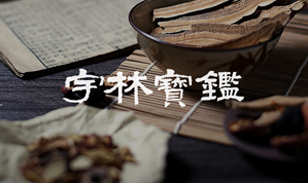Hand of Hope
For hand rehabilitation
 Over 15 million people worldwide suffer a stroke each year
Over 15 million people worldwide suffer a stroke each year
 A stroke is the largest cause of a disability with half of all survivors being left with
an impairment of the
A stroke is the largest cause of a disability with half of all survivors being left with
an impairment of the
hand and arm leading to an inability to execute their activities of daily living.
 Consequently a patient can lose motivation and hope which is key to their rehabilitation, especially when the
Consequently a patient can lose motivation and hope which is key to their rehabilitation, especially when the
greatest recovery can be seen in the first days and
weeks after a stroke.
 Hand of Hope
Hand of Hope
 Let’s introduce you to the Hand of Hope, an award winning, state-of-the-art sEMG driven robotic hand
Let’s introduce you to the Hand of Hope, an award winning, state-of-the-art sEMG driven robotic hand
rehabilitation device that combines advances in robotics and neuroscience to enable stroke survivors to restore movement to their paralysed
hands.
 Neuroplasticity
Neuroplasticity
 The brain has a unique ability to reorganise itself by forming new neural connections throughout our lifetime. Neuroplasticity allows the neurons in the brain to
compensate and adjust their response to new activities and situations after strokes or
brain injuries.
The brain has a unique ability to reorganise itself by forming new neural connections throughout our lifetime. Neuroplasticity allows the neurons in the brain to
compensate and adjust their response to new activities and situations after strokes or
brain injuries.
 Highly intensive repetition of activities has shown to promote a reconnection of
pathways leading to neuromuscular rehabilitation of the hand and forearm that may
help patients regain hand mobility through motor relearning.
Highly intensive repetition of activities has shown to promote a reconnection of
pathways leading to neuromuscular rehabilitation of the hand and forearm that may
help patients regain hand mobility through motor relearning.

 Hand of Hope basics
Hand of Hope basics
 The hand brace is worn on the impaired hand with 2 surface sensors attached to
the extensor and flexor muscles of the forearm to detect the surface
electromyographic signals (sEMG) for active participation during exercise.
The hand brace is worn on the impaired hand with 2 surface sensors attached to
the extensor and flexor muscles of the forearm to detect the surface
electromyographic signals (sEMG) for active participation during exercise.
 Intended use
Intended use
 The Hand of Hope therapy device is intended for use in patients that require hand
and forearm rehabilitation. Potential goals for the use of HOH could be, but not limited to the following:
The Hand of Hope therapy device is intended for use in patients that require hand
and forearm rehabilitation. Potential goals for the use of HOH could be, but not limited to the following:
- Motor learning via interactive use of the biofeedback system
- Help initiation of the voluntary muscle contraction and voluntary movement
- Maintain voluntary muscle contraction and the voluntary movement
- Control of abnormal muscle activity
 Indications
Indications
- Decreased muscular activity after stroke, spinal cord injury, Hand / Finger injury
- Difficulty to self-initiate, control or maintain voluntary muscle movement
- Impaired coordination of voluntary movement of the upper limb
 Hand of Hope is used to facilitate
Hand of Hope is used to facilitate
- Initiation of voluntary muscle contraction
- Motor control and coordination
- Muscle relaxation
- Motivation
- Control of abnormal muscle activity






